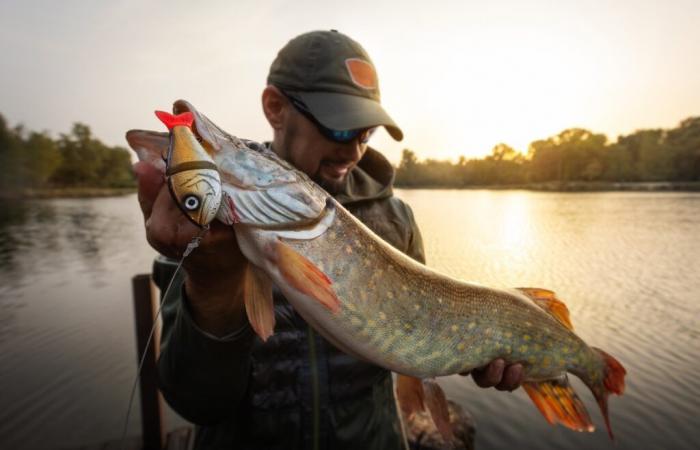In Haute-Savoie, a fisherman had the pleasure of taking out a huge pike. A record catch shared with his friends who came to accompany him.
During an ordinary day of fishing last October, Jean-Louis Pelus experienced an unforgettable moment. Aged 60, he has been devoting himself to his passion almost every weekend for 45 years. He actually started teasing fish when he was 15. That day, after an intense thirty-minute fight, he managed to bring out a huge pike. 1.23 meters for 11.6 kg, unheard of for the amateur fisherman. With his friends, present at his side during his fierce fight, they were in heaven once the fish was collected in the net. It is indeed very rare to succeed in capturing a pike of such size. This type of freshwater fish generally has much less imposing characteristics.
The specificities of the pike depending on its habitat
The pike is in fact considered the emblematic predator of fresh waters. Its silhouette is recognizable by all fishing enthusiasts. Slender and slender, it presents certain variations depending on the aquatic environment in which it evolves. For example, those of still waters are distinguished by a wider and more robust shape. Their fast-river counterparts they display a more slender and dynamic appearance. This demonstrates once again how well nature is made. This permanent adaptability to optimize survival.
Pike coloring
Its coloring is fairly uniform, regardless of the type of environment. It generally has a back that displays a more or less deep green, dotted with olive spots. Young individuals display vertical bands, while adults have quite aesthetic “marbling”. On the sides, the colors become lighter, while the belly is completely white.
A not-so-dangerous predator
Despite its reputation as a formidable predator, the pike is not as dangerous as one might imagine. He particularly likes slow and stagnant waterwhere he tries to camouflage himself. Although his voracity has been greatly exaggerated, however, it remains an opportunistic carnivore. Its reproduction takes place in spring, generally between February and March. When females migrate to shallow streams to lay their eggs. They can produce 15 to 20,000 per clutch. History does not tell what happened to the pike caught by Jean-Louis Pelus and his friends. Was it released or was it prepared for a good feast among fishermen at the end of the day?






